Microdermabrasion: All You Need to Know
Microdermabrasion has quickly become everyone’s favorite facial. Here’s why clients love the microderm facial, how it’s done, who’s it for, the average price, aftercare info, and much more.
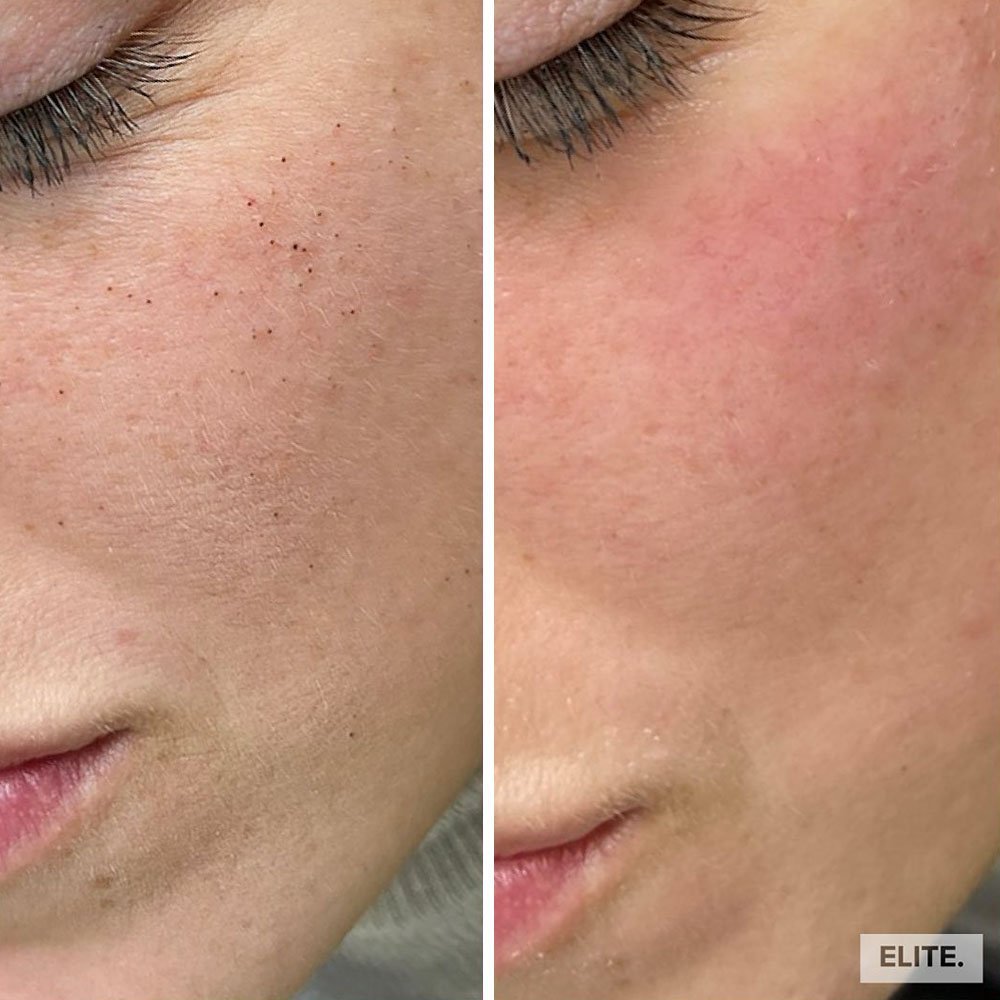
Image source : PMUhub
Explore more dermabrasion topics:
We all love a good facial! The beauty industry has grown so much it now offers us countless options for fixing any imperfections we may have, and if there’s one aspect estheticians have definitely mastered it’s giving us the flawless complexion we all strive for.
In the sea of new, trendy treatments that emerge all the time, microdermabrasion has proved to be one of the most effective ones among non-invasive, no-downtime, go-straight-back-to-your-day options. Clients definitely love it and it gets rave reviews.
Here’s all the info on the microdermabrasion facial you need.
What Is Microdermabrasion?
Microdermabrasion is a form of skin resurfacing. It’s a type of mechanical exfoliation that removes the outermost layer of dead skin cells from the face to reveal better skin underneath.
It emerged during the 90s as a less invasive version of the dermabrasion, which is a clinical treatment that goes much deeper into the skin and removes a thicker layer of it. Initially, the microdermabrasion was used to treat elevated burn scars, but it was soon revealed that the technique can be used to improve a wide range of complexion imperfections.
Microdermabrasion made its way into salons and spas and it’s now one of the most often suggested treatments.
It can successfully diminish or eliminate a long list of conditions.

What Imperfections Can Microdermabrasion Improve?
Since microdermabrasion removes the outermost layer of the skin, it can successfully improve or eliminate surface imperfections that don’t reach deep into the skin. It can be used to:
- Diminish signs of aging
- Diminish hyperpigmentation & melasma
- Diminish shallow scars (especially acne scars)
- Diminish large pores
- Treat acne (if the breakout isn’t too intense)
- Cleanse the skin from dirt and remove blackheads
- Reduce stretch marks
All these effects are followed by an overall improvement in the skin’s texture and appearance. It gives the treated area an attractive glow, makes it smoother and more supple, and leaves it re-energized.
How Does the Microderm Facial Work?
Microdermabrasion is a special form of mechanical exfoliation which essentially scrapes off the outermost layer of the skin and removes the debris in one move.
It’s performed with a handpiece which has a rotary tip. The tip is either an abrasive, diamond tip surface, or a smoother surface that’s used in combination with crystals. So, there are actually several forms of microdermabrasion widely available in salons:
- Diamond microdermabrasion – the tip has an abrasive surface that comes into direct contact with the skin
- Crystal microdermabrasion – aluminum oxide crystals are released and the tip rubs them against the skin
There are many, many brands of microdermabrasion tools available and they might work in slightly different ways, but the principle is the same: a gentle abrasion of the skin with a rotating surface.
In any case, the tip has a hole in the middle, and the handpiece actually performs suction simultaneously with the rotation. What this does is immediately remove the skin cells and dirt lifted from the skin, and sucks out the contents of pores, so no impurities are retained on the layer of the skin that’s revealed.
The combination of exfoliation and suction provides very efficient skin resurfacing. Although it’s only the outermost layer of the skin that’s treated, the abrasion inflicts microtrauma, which triggers the production of collagen and elastin as the skin recovers. This provides extended effects and contributes to the skin resurfacing.
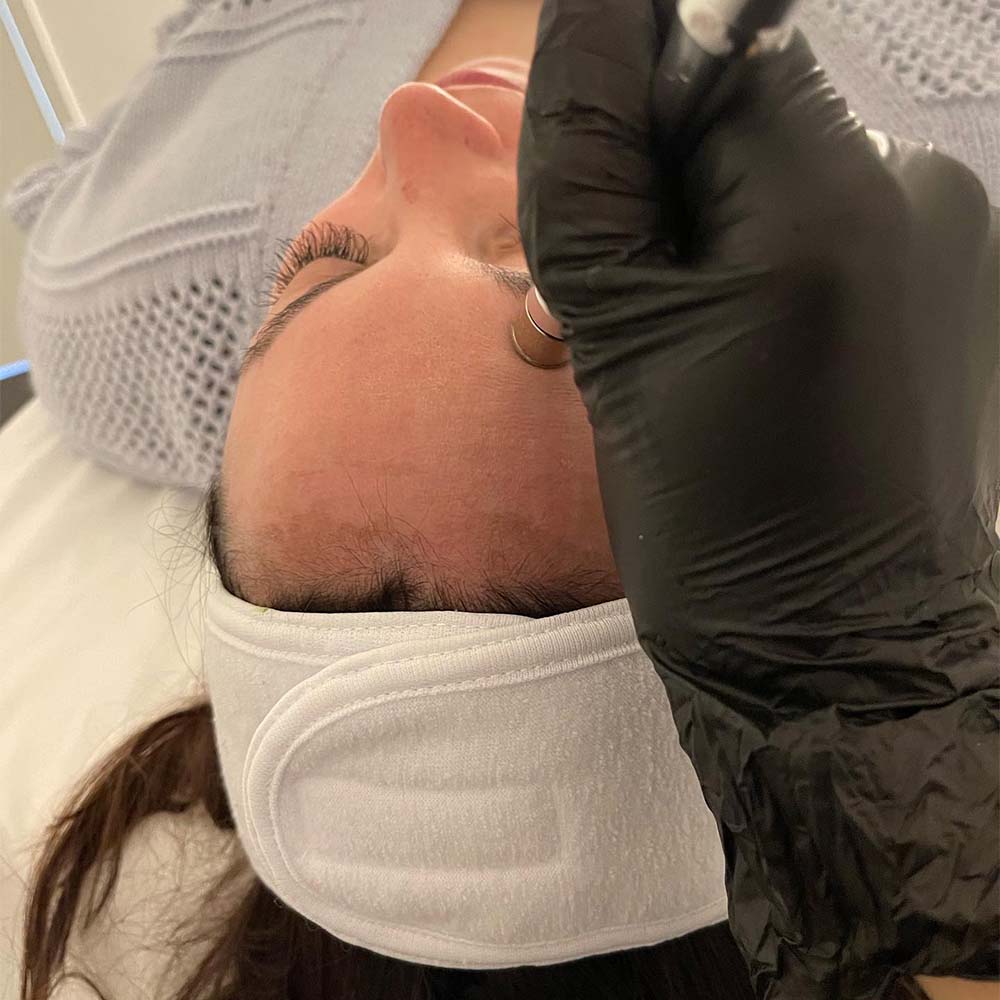
What Does a Microdermabrasion Treatment Look Like?
A dermabrasion treatment goes something like this:
1. Pre-Cleansing
The skin that will be treated needs to be cleansed thoroughly to remove any makeup or skincare residues and sebum.
2. Actual Microdermabrasion
The handpiece is activated and the technician will rub it against the skin in short motions. The pressure is adjusted to the needs of the skin, depending on how thick the layer that needs to be removed is.
The tech will choose a more or less gritty tip depending on how thick or thin your skin is, and how intense the exfoliation needs to be. The suction force is also adjusted according to the sensitivity of the skin and the size of the pores.
Any areas which are too compromised to be treated will be avoided, like particularly intense acne.
Usually, 2 passes are made, and the technician may switch between smaller and larger tips to ensure best grip.
3. Cleansing
Although the suction will eliminate most of the debris, the skin needs to be cleaned to remove any potential residues. It will be wiped with a gentle cleanser.
4. Optional Add-Ons
Depending on the needs of your skin, the microdermabrasion can be followed up with some other treatment to achieve maximum results, like microcurrent facial toning, or LED light therapy.
5. Soothing Mask
Finally, some type of soothing mask is applied to the treated area to calm everything down, minimize redness and swelling, and provide nourishment and hydration.
How Long Does the Treatment Take?
It’s a quick one – a microdermabrasion facial can last from 30 minutes to an hour, depending on whether you’re getting any add-ons or not.
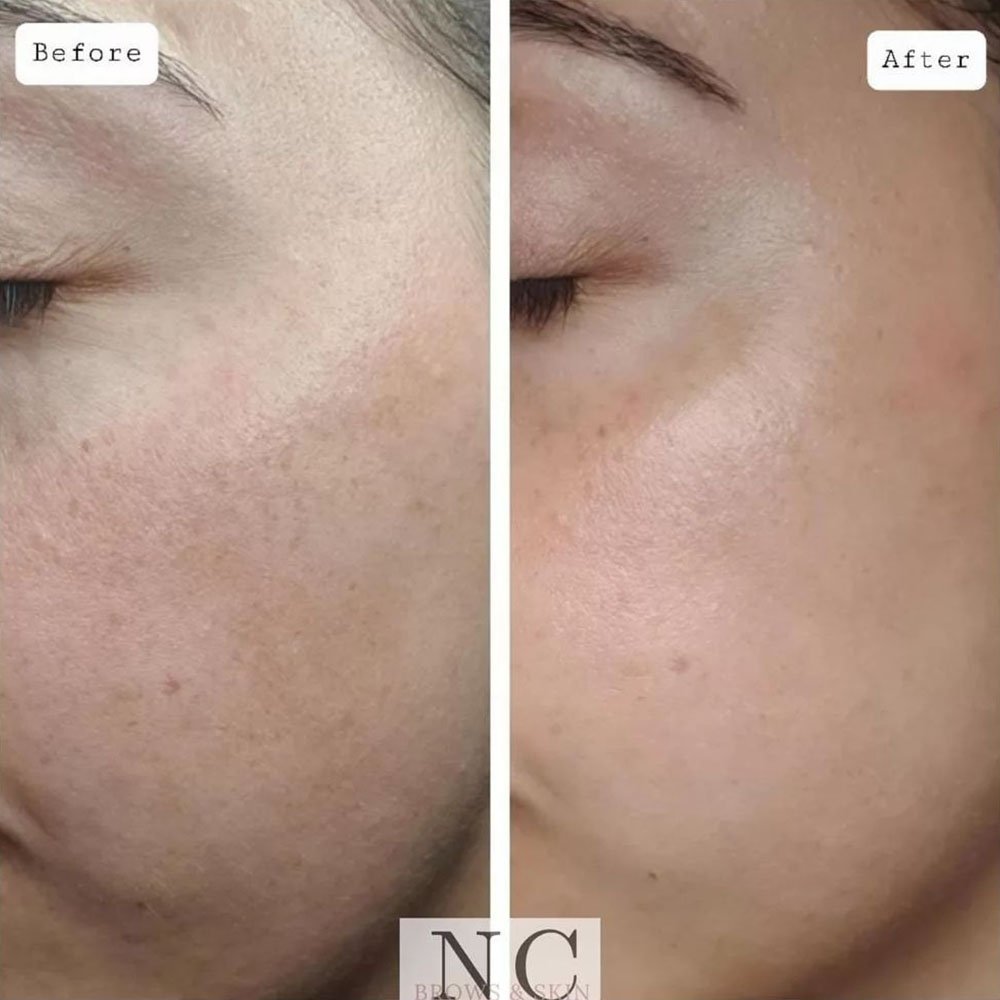
Does the Microdermabrasion Treatment Hurt?
No. Since the microdermabrasion facial affects the dead layer of skin, there will be no pain. Some find the sensation uncomfortable at most, but others claim it’s actually pleasant.
If you feel any pain or major discomfort, tell your technician – they may need to use a less gritty tip or adjust the suction force.
How Soon Can I Expect the Results?
The results of the microderm facial are immediate. Your skin will look much better right after the treatment.
But if you’re trying to improve a condition such as scarring, hyperpigmentation or signs of aging, you will probably need to get several sessions to achieve the desired results.
To keep your skin looking its best and to prevent further aging, periodical maintenance sessions are advised.
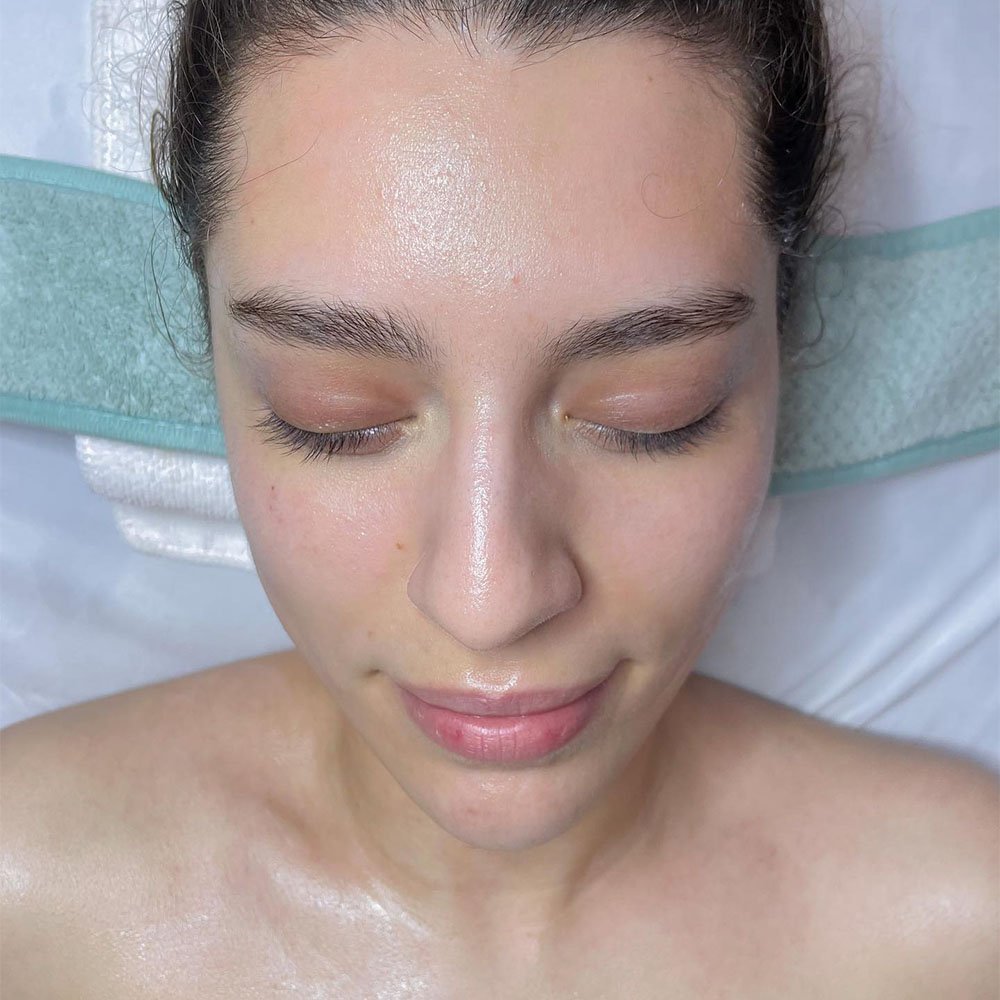
Are There Any Side Effects?
Nothing major.
Whenever you’re using products you haven’t used before, there’s a risk of allergic reactions which can be prevented with a patch test if you’re generally prone to allergies. If you’ve had reactions to products in the past, tell your technician and they’ll readjust the choice of products.
Microdermabrasion is a totally non-invasive procedure and it entails no downtime – you can carry on with your day.
You might experience the following for a few hours, though:
- Some redness
- Minor swelling
- Minor bruising
A couple of days after the treatment, your skin might feel dry and you might get some flaking. This means your skin is doing some additional peeling and it will be over quickly. Moisturize it generously with a product your technician recommends.
One thing you need to know, though, is that your skin will be sensitive to sunlight exposure for a few days, and you’ll need to wear SPF to protect it from sun damage.
Is the Microderm Treatment Safe?
Yes, as long as you find a licensed, experienced technician who can assess your skin and recognize its needs.
Since no living tissue is affected, there are no major risks like there are with dermabrasion, the more aggressive form of the treatment.
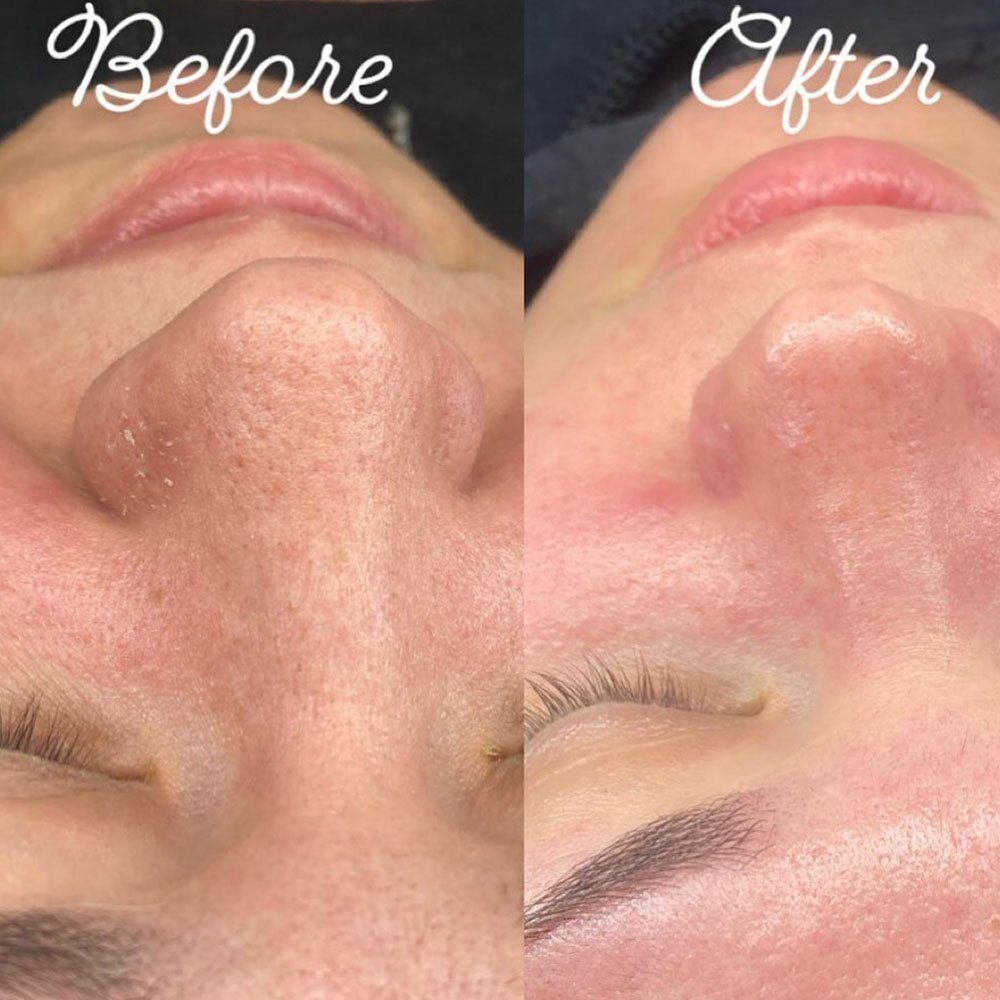
How Much Does Microdermabrasion Cost?
The price of a microderm facial can be anywhere from $50 to $200, depending on your location, the exclusivity of the salon, and the optional add-ons. If you’re doing other treatments alongside microdermabrasion, the price can be much higher.
Every session is charged separately, but some spas offer package deals if you book multiple treatments.
How Does Microdermabrasion Compare to Dermabrasion?
Microdermabrasion stemmed from dermabrasion, but there are many differences between the 2 treatments.
Dermabrasion is much more aggressive. It removes a much thicker layer of the skin and reaches into the dermis, so living tissue. There is usually blood, and the treatment requires 1-2 weeks of downtime, and the injury is more severe.
Since it’s so aggressive, dermabrasion is only performed in cases where less invasive treatments won’t give an improvement: deep scarring, deep wrinkles, prominent blood vessels, etc.
Dermabrasion can only be performed by dermatologists and plastic surgeons, since it’s very serious and carries risks of scarring and permanent discoloration. It’s also painful and requires the administration of local anesthetics.
In comparison, the microdermabrasion facial is much gentler. It’s done to target particular issues, but also to improve the overall appearance of the skin. It doesn’t hurt, there’s no downtime, no serious risks, and it’s widely available in spas and beauty salons. It’s also cheaper, with surgical dermabrasion priced at an average of $1800.
For a detailed description of dermabrasion, head over to this guide.
Microdermabrasion – Main Takeaways
Microdermabrasion is a great skin treatment because it can basically help you with any skin concern. From diminishing and even eliminating scarring, signs of aging or discoloration, to just improving the overall state and appearance of your skin and giving it a healthy glow, virtually anyone can benefit from a microdermabrasion facial. It’s a fast, pain-free facial which gives immediate results.
weekly insight into PMU insdustry
Subscribe to our FREE newsletter. 100% good stuff.

support us so we can keep providing you with free education , information and inspiration.
